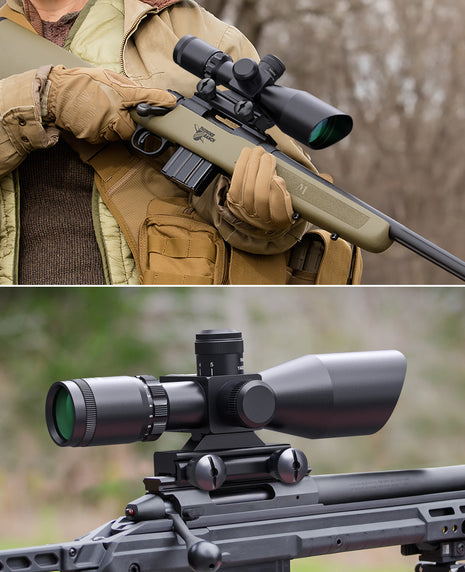Choosing a Rifle Bipod for Your AR-15
- 3 Tiempo mínimo de lectura

For a stable shooting platform that offers greater precision for your rifle, a bipod is second to none.
Do You Need a Rifle Bipod?For a stable shooting platform that offers greater precision and increased support for your rifle, a bipod is second to none.
At long distances, shooting from some positions with accuracy can be next to impossible without some form of stabilization.
Marksmen have many variables to account for: environmental factors, the ebb and flow of the body’s natural rhythm, as well as optimizing your position for follow-up shots.
But the rifle bipod helps eliminate many of these factors before squeezing the trigger.
You Should Use a Rifle Bipod
The term bipod comes from two Greek and Latin terms, “Bi” meaning two and “Pod” meaning foot.
So it adds up that a rifle bipod is a two-legged platform that’s mounted at the forend of a weapon. Generally speaking, a rifle bipod provides a shooter with much more stability.

Bipod Types
There’s a variety of different types of bipods – different heights, heavy-duty or lightweight versions. Here are the main bipod options to be aware of:
Traditional Bipods
A traditional bipod is a simple two-legged stand that holds the weapon upright, generally they utilize both swivel studs or picatinny rail attachments. The legs can be folded up for easy transportation and locked into place, and many models of bipods offer adjustable legs that allow more shooting positions.
Rubberized feet provide greater friction and grip, and the supporting legs can adjust heights to fit different shooting positions.
Grip Pods
Grip pods are bipods that are deployed from a foregrip mounted at the fore-end of rifle. Grip pods are standard equipments for military personnel who need to rapidly transition between standing and prone shooting positions.
Affixing a Grip pod is as simple as attaching a conventional foregrip to a weapon depending on the rail system or handguard your AR-15 has.
Monopod
Monopods are a lot like a conventional shooting stick. If you’re unsure of what a shooting stick is, it’s basically a single-legged shooting platform.

One issue with monopod is they can’t be attached to swivel mounts, so you must reset your position to engage a new target.
Bipod Mount Types
Picatinny Bipod Mount
A preferred method, for convenience and durability, these bipod mounts affix directly to a quad rail or a picatinny rail segment of a handguard.
Picatinny rails allow for accessories to be attached to the weapon without any gunsmithing and offer quick detachment capability normally.

Keymod rail systems are designed for attaching keymod compatible accessories to an AR-15.

M-Lok Bipod Mount
The M-Lok system is essentially Magpul’s take on the Keymod system. The M-Lok system uses narrow slats and T shape mounting lugs in place of keyholes.
M-Lok bipod mounts can be affixed at the front or rear of the slot, so you have greater customization in terms of bipod placement.
Tags
- Compartir en:
- Deel
- Tweet
- Póngale un alfiler.
- Messenger
- Correo electrónico
You May Also Like
Blogs & News
-

, por C V LPVO vs. Holographic Sight for AR-15 Home Defense
-

, por C V How to Set Up Co-Witness Sights on AR-15
-

, por C V Crossbow Scope Setting Methods for Different Distances
-

, por C V 2025 Spring Turkey Hunting Season Gear Guide













